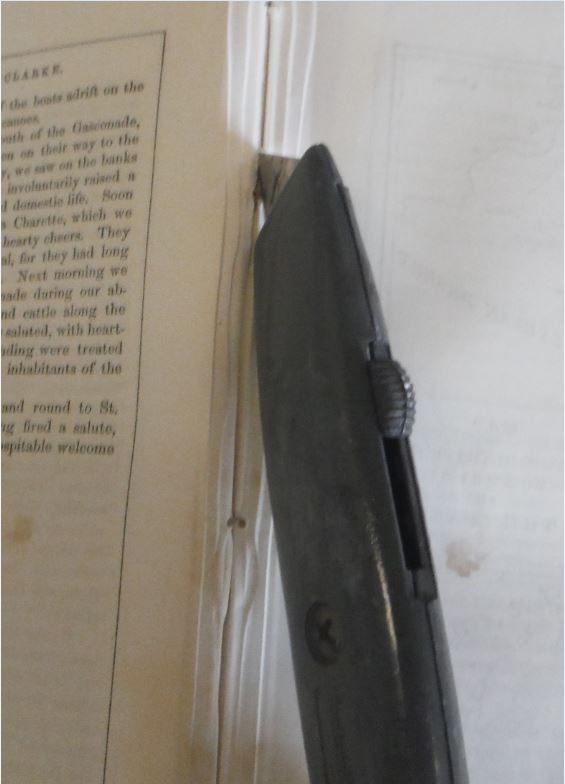The Breaker : Still controversial – but it can be profitable
- by Susan Halas

Use a new sharp blade and cut carefully through the sewing.
While the text block is still intact go through it page by page and pencil in the date lightly in the margin of every map and the first page of every selection. Mark the places in the book where the cuts will be made. Go all the way through it forward and backward, check the maps and illustrations against the table of contents. Remove any odds and ends that have been inserted in the past century or two including maple leaves, ferns and old book marks.
Take off all the parts that will not be offered for sale including the preface, the table of contents and list of maps and illustrations, the index, the end papers, the back strip and most importantly the title page and pack them separately. Do not throw this material away. Keep it where you can find it - if not forever at least until all the parts have been sold.
Take the text block and open it to the back and locate the last selection. Find the break then carefully spread the paper and smooth the paper at the gutter to expose the sewing. Using the scissors or the knife - whichever works more effectively - snip the exposed sewing. Then carefully and gently insert the point of the knife and in one smooth clean stroke cut all the way through the sewing, the cloth webbing and any paper backing on the spine.
Do this in a smooth gentle manner and try not to snag or tear any of the paper as you make the cut. Separate the piece from the text block. Then remove any stray string, bits of cloth, glue or paper. Check for loose pages, tears, old leaves or ferns you missed the first time through. Make sure that the penciled date has been notated lightly in pencil and put in its own protective bag.
Now repeat using the selection at the front of the text block. Alternate back and forth until all the pieces have all been cut and bagged.